Today, I’ll be attending my book club in Calgary as well as Sandra’s virtual book club. https://sandrasbookclub.blogspot.com/
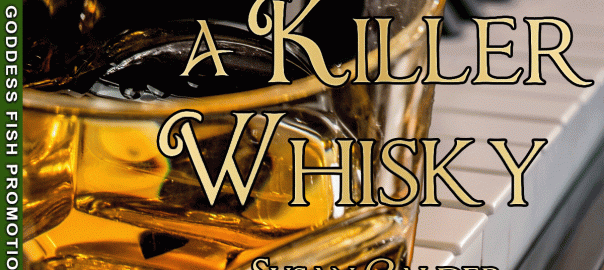

Today, I’ll be attending my book club in Calgary as well as Sandra’s virtual book club. https://sandrasbookclub.blogspot.com/

I am busy today on my blitz tour, visiting two readers’ blog websites: Gina Rae Mitchell and Long and Short Review. You can check out either one or both. https://ginaraemitchell.com/killer-whisky/?like_actor=16376877&like_hmac=a1fed9d05250771e32ad4a374ee25203&postid=63371&commentid=47384&like=1&source=sub_email and A Killer Whisky by Susan Calder – Spotlight and Giveaway

If you missed the first day of my blog tour – and even if you didn’t – you can check out the second readers’ website that is hosting my tour. https://fuonlyknew.com/2025/02/25/a-killer-whisky-by-susan-calder-peek-inside-and-giveaway/?fbclid=IwY2xjawIqtHlleHRuA2FlbQIxMQABHWH76sTf8KtOpejS9CLlTzks1zqi0L4tY3EcvEZZKu0F4dZ3OYIbe62SHw_aem_cnRxQHXw2PNMD9P8dARpwQ&subscribe=already#subscribe-blog-blog_subscription-3 I’ve tried posting some comments but don’t see them on the site yet. Maybe they are screened first. I’m still learning the ropes of doing this.

I’m starting a blitz blog tour today. I’ll be visiting different blog sites every day until March 7. You can check them out and leave a comment for a chance to win an Amazon/Barnes and Noble gift card. Here’s the link for my first blog visit. https://joanneguidoccio.com/2025/02/24/blurb-blitz-a-killer-whiskey/#comments
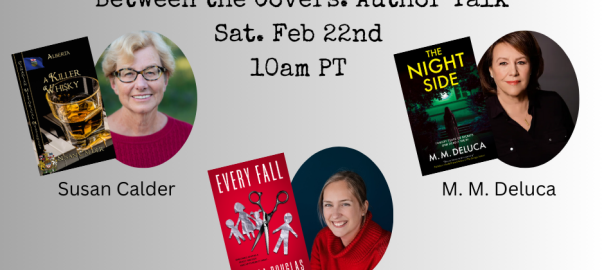
I’ve picked the date and venue for the official launch of my new novel, A Killer Whisky. Tuesday, March 25th, in the Treehouse at cSPACE, Marda Loop. The Treehouse is a whimsical name for the 4th floor meeting room in Calgary’s creative arts incubator. I held my last book launch there and the views are especially beautiful at sunset. Thanks to the spring forward to daylight savings time, we’ll be there again for sunset and twilight for A Killer Whisky’s launch.
The launch program will be similar to the ones at my last few book launches, with a twist. I’ll do a PowerPoint presentation showing photographs related to my novel’s time frame and setting locations. Some will be pictures of Calgary circa 1918; others will be photos I’ve recently taken of 100-plus-year-old buildings featured in the story.
It’s customary at book launches to serve wine and light refreshments. Since “whisky” is in my novel’s title and plays a large role in the story, a twist to the beverage service will be whisky instead of wine. Attendees can try a “wee dram” or a signature whisky cocktail. One of my tasks for the next month will be to develop cocktails named for my novel’s characters. It’s a tough job, but I’m up for the challenge.
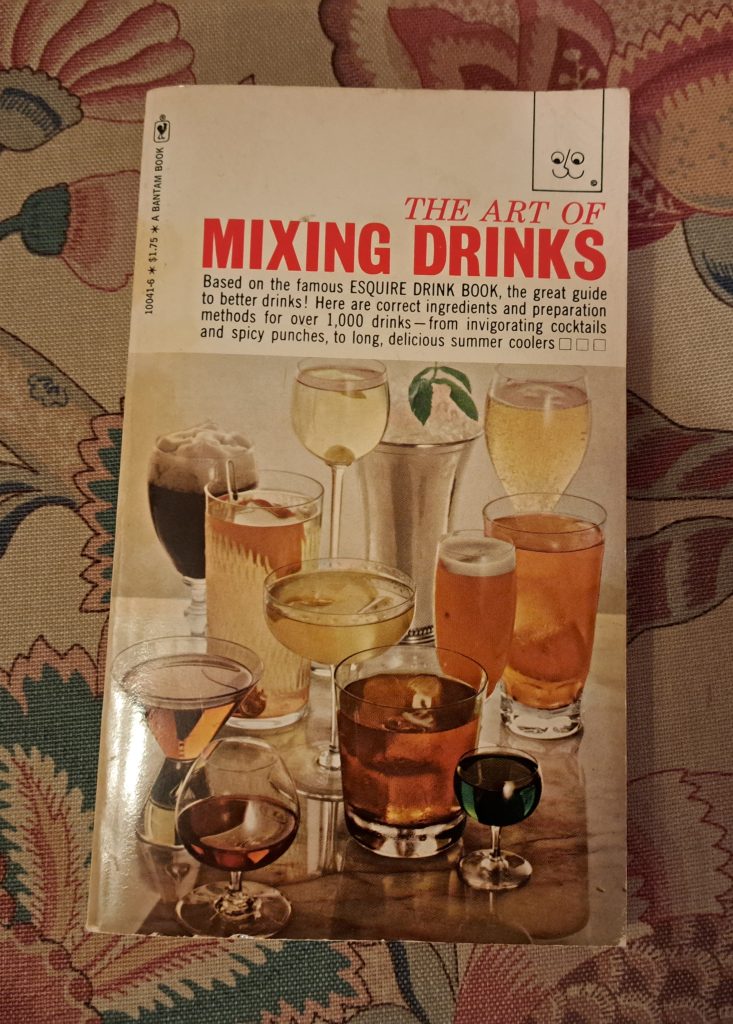
Another task will be to continue to work on online promotion to promote the book launch. If you missed Shaun’s interview with me, check out her blog post: http://shaunhunter.ca/writing-the-city/2025/1/4/susan-calders-calgary-history-mystery
On Feb 22, 10 am PT, everyone’s invited to my online conversation with two other authors from Sisters in Crime Canada West. It’s a free event, but you need to register here (scroll down to Between the Covers https://sinc-cw.ca/upcoming-events/
The week before my Calgary book launch, I’ll get to practice my PowerPoint presentation at the Pincher Creek Library in Southern Alberta. https://pinchercreeklibrary.ca/. I’ve titled this talk “War, Pandemic, & Prohibition: how historic events inspired my novel.” Unfortunately, the library doesn’t allow liquor service, so this event will reflect the novel’s Prohibition theme.
Cheers! I hope to raise a glass with some of you at these events.

On Saturday, February 22nd, I’ll be participating in an online discussion and reading called “Between the Covers” produced by Sisters in Crime Canada West. The event is free and open to everyone, but you need to register here: : https://sistersincrime-org.zoom.us/webinar/register/WN_C0uxgJr6SNatYBJVxTGltQ
Hope to see you online!

My new novel, A Killer Whisky, was published in December. For my previous books, I’ve held book launches close to the release date, but December isn’t generally a good month for these events. Booksellers who host launches are busy with Christmas sales and everyone is shopping and attending parties. They find it hard to fit an additional activity into their hectic schedules.
So, I postponed my book launch event to the new year. Due to other commitments from January through mid-March, I’m looking at late March for the party. The period between now and then will be my soft launch and planning time.
The first step is to settle on a venue and date. My local bookstore, Owl’s Nest Books, doesn’t have space in their premises for our hoped-for number of attendees. I’m considering a couple of options and waiting for more information and confirmation of the date.
Next, I’ll plan the launch program. The last few times, I’ve prepared PowerPoint presentations. I enjoy doing them and the 1918 setting of A Killer Whisky provides more scope than my contemporary novels. I’ll discuss Calgary history in relation to the book and show archival photographs as well as photos I’ve taken on my visits to story settings. In the past, I’ve liked inserting readings from the novel along with an image of the scene’s location.

It’s customary at launches to serve wine and light refreshments. I had the idea to shake this up by serving whisky, which is in the novel’s title and plays a large role in the story. But one venue I’m considering makes providing alcohol problematic. So, how about a Prohibition theme with virgin cocktails? Prohibition features prominently in the novel.
Theme is key to a successful launch I learned from a speaker at a writers’ festival last summer. The best launches create a vibe and atmosphere that brings the world of the story alive. Venue, decorations, activities, food, drink, music. I’ll probably stop short of appearing in period dress.
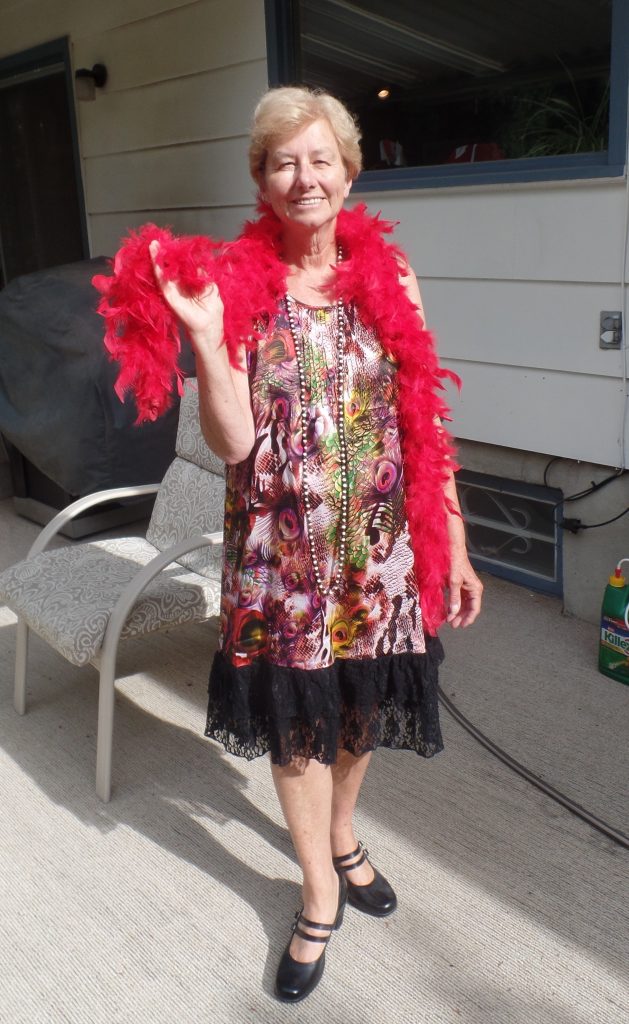
During this short launch time, I’ve lined up some online happenings that build to the actual launch. First up is an interview by my friend Shaun Hunter, a Calgary writer and literary historian. Check out Shaun’s blog today for the interview. http://shaunhunter.ca/writing-the-city
In February, I’m scheduled to appear on BWL author J.Q. Rose’s blog. https://www.jqrose.com/ I’ll also participate in an online discussion with two fellow Sisters in Crime writers in an event called Between the Covers.

I’ll keep my eyes open for other soft launch opportunities during these next two months of planning and preparation that are turning out to be less relaxing than I’d expected.
Happy New Year!

On today’s BWL Author blog, I talk about my first steps in planning a launch for my new novel, A Killer Whisky. https://bwlauthors.blogspot.com/

My husband Will and I have developed the habit of spending part of November and/or December in Puerto Vallarta, Mexico. During our visits these past four years, we’ve noticed that as soon as the Day of Dead (Nov 1-2) celebrations are over Christmas decorations appear on buildings and streets. We northerners find it a bit jarring to see Santa Clauses in snowsuits and boots, reindeer, and our traditional Christmas trees juxtaposed with palm trees and swimsuits.
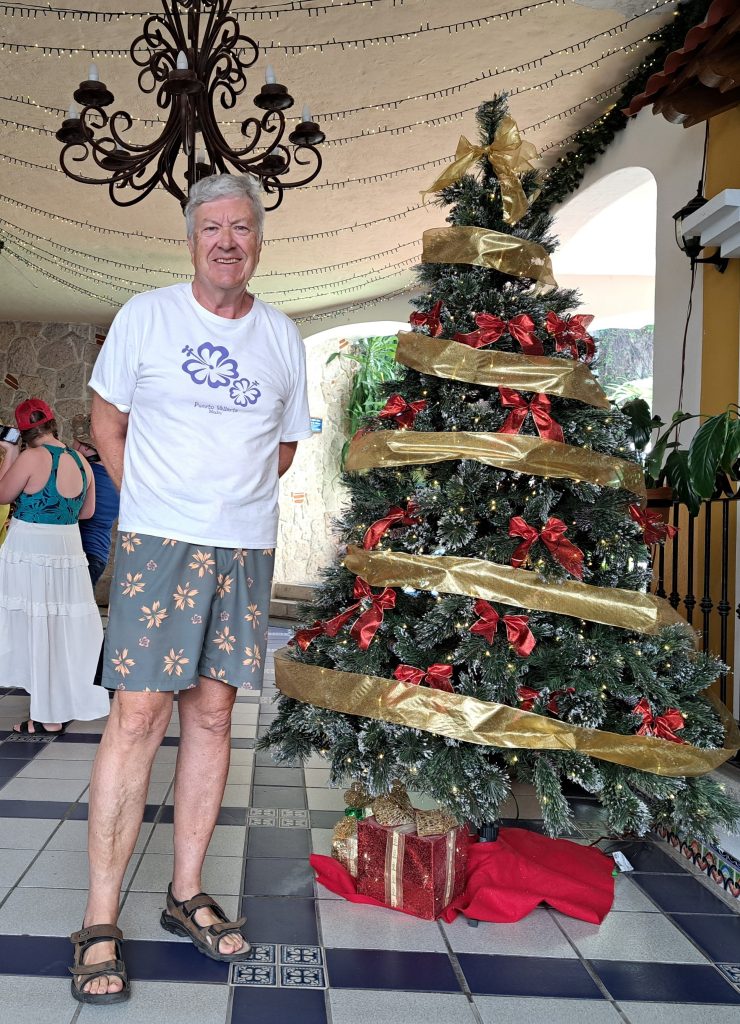
No doubt Mexicans display these decorations partly for snowbird tourists, but they seem to enjoy the festivity. Our hotel desk clerk was pleased when I admired the suggestion box she’d creatively decorated. I wonder if part of the appeal is that red, green, and white Christmas colours happen to be the colours of the Mexican flag.
Most Christmas decorations we saw for sale were similar to ones available at Canada Walmart, although occasional stores sold Mexican piñatas. Unfortunately, they were too bulky and fragile for us to bring home in our suitcases to add a Mexican flair to our own Christmas decor.
Mexico is a predominately Roman Catholic country and Christmas is ultimately a religious celebration. From December 1-12 some 400 processions wind through the streets of Puerto Vallarta and culminate at Our Lady of Guadalupe Church. These parades commemorate the appearance of the Virgin Mary to the peasant Juan Diego on December 12, 1531. Our hotel organized a procession for staff members and invited hotel guests to attend. They asked to wear white although the dancers appeared in colourful costumes.
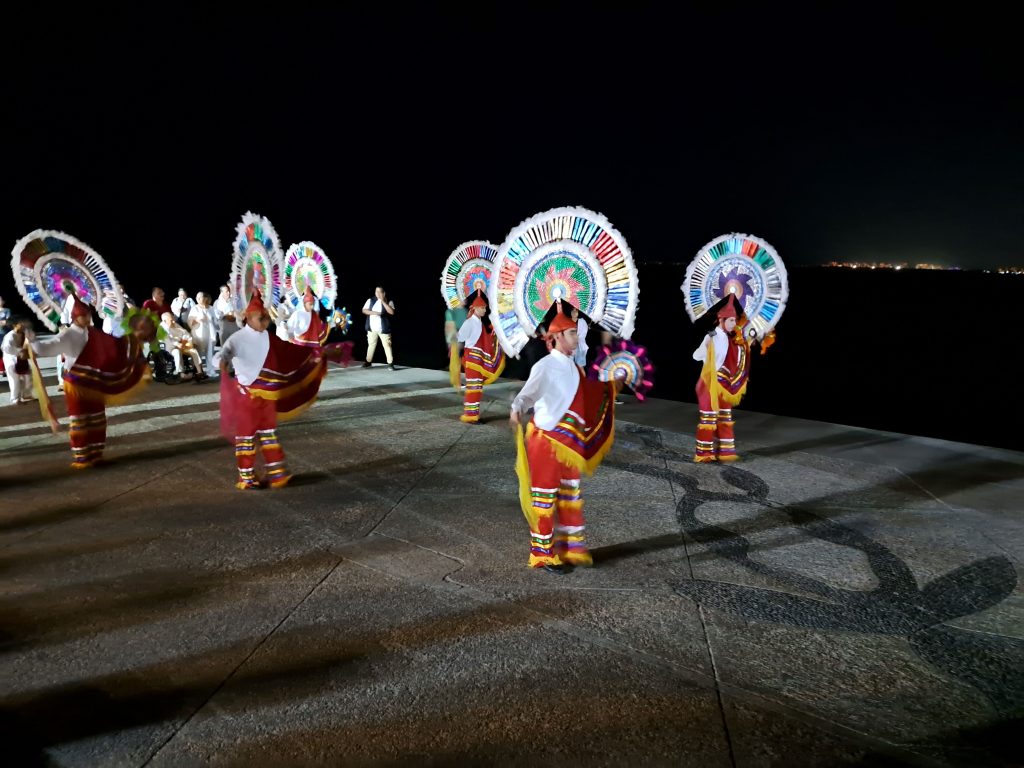
The candlelight processions include both Aztec and Christian costumes and motifs, mariachi bands, and singing by all participants (the organizers gave us song sheets). Food stalls filled the park in front of the destination, Our Lady of Guadalupe Church.
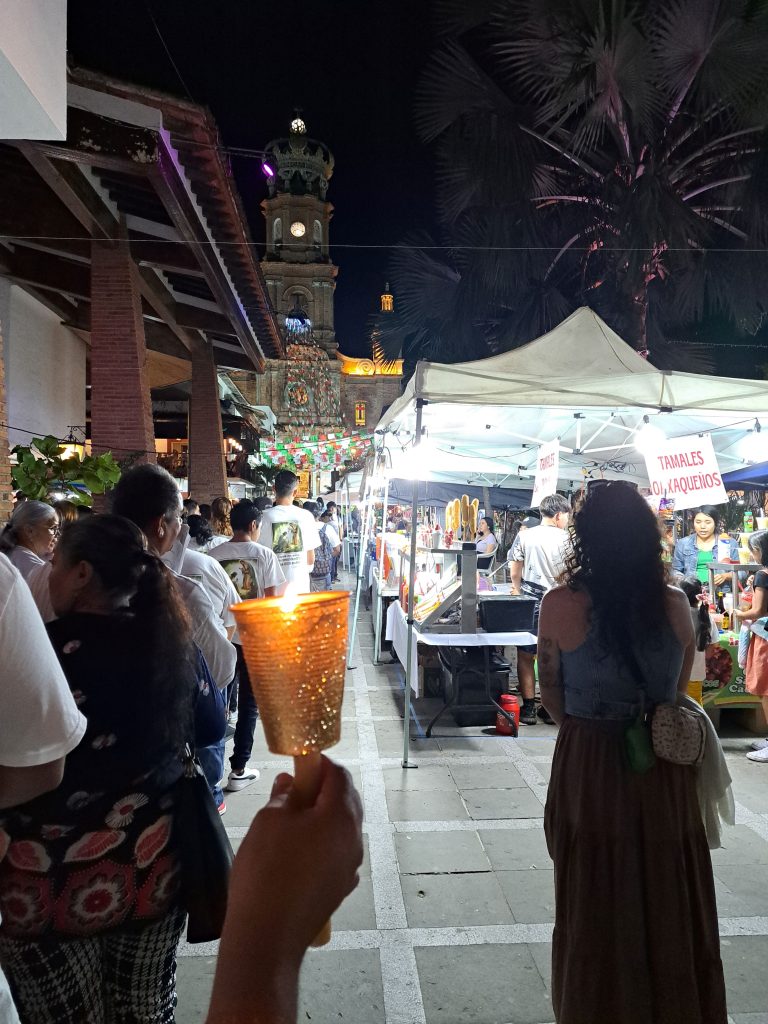
We found it a beautiful way to welcome the Christmas season. With luck we’ll continue our Mexico habit next year.
Happy Holidays to you!


In September my husband Will and I flew to Split, Croatia, to visit our son Matt, who is living there for a year. Before leaving, Will plotted a 10-day road trip from Split through mountains, lakes, and charming towns in Croatia and neighbouring Slovenia. Matt took a holiday from work to join us.
Our trip began with a couple of glitches – the long range weather forecast predicted rain and unseasonably cool temperatures and the airline lost our luggage with our warm and waterproof clothing. Our first stop on the drive was the Mall of Split, where we bought rain ponchos, umbrellas, toothbrushes, and spare t-shirts, underwear and socks.
Day two was Plitvice National Park, about three hours north of Split on the scenic mountainous route. We spent six hours at the popular park walking by hundreds of waterfalls and clear, green lakes. The views were awesome and we were comfortable in our five layers of clothes. The rain held off until the end of our walk, but I wore my poncho the whole time for warmth.



The following day, we drove to Slovenia. The highway wound past cornfields and picturesque towns, including Novo Mesto, birthplace of Melania Trump. At Ljubljana airport we were reunited with our luggage, which Split Airport had eventually located and kindly flew to our next destination. Dressed in our warm jackets, we enjoyed an evening walk in Ljubljana’s downtown riverfront cafe area which buzzed with people and activity. It was lovely to see the castle, buildings, and bridges lit up on a dark clear night.


In the morning, we rode the funicular up to the castle that dominates Slovenia’s capital city. The highlight was the tower lookout’s 360-degree views of the surrounding area. The recent precipitation had fallen as snow on the mountaintops, which made the city’s backdrop extra spectacular.

After our Slovenian lunch of sausages and cabbage soup, we had dessert and cappuccinos at the rooftop restaurant in Nebotičnik Skyscraper (12 stories) for more panoramic views until rain chased us into the National Museum of Slovenia. The museum portrayed the history of Slovenian peoples from Neanderthal to the present time.

From Ljubljana, we settled in Lake Bled for three nights. On our first walk, the lake was stunning in the late afternoon light.

In the morning, we walked up to Bled Castle and around the lake. At the far end, we hiked to a viewpoint with views of Bled Island and Bled Castle. The day’s weather was perfect – sunny and high of twenty degrees Celsius (68 F).


On our second full day in Bled, we did a day trip to Vintgar Gorge. Since COVID, the Triglav National Park has set up a system of timed entries and one-way trails to reduce congestion during the crowded summer season. We found the gorge didn’t outshine similar ones in our Canadian backyard, but the return path with views of Bled Castle and valley villages made the trek worthwhile. The park charges 10 Euro per person which includes helmets for protection from falling stones and banging your head on the rocks jutting out from the side of the gorge’s narrow boardwalk trail.

The following day, we set out for the Julian Alps, took a wrong turn, and found ourselves in a five-mile tunnel. Half-way through it, Matt’s phone pinged: “Welcome to Austria.” Oops! Our car rental was only insured for Croatia and Slovenia. At the Austrian end, a lineup of delivery trucks stretched for miles.

To avoid getting stuck in the lineup, Matt found us a route through Austrian villages and a mountain pass back to Slovenia. We stopped at Kranjska-Gora, a resort town that reminded of us of Banff in our home province of Alberta.

For several hours, we drove the fifty switchbacks (they are numbered) up and over the Vrsic Pass. We stopped at viewpoints with vistas of craggy mountains and a Russian Chapel constructed by WWI Russian prisoners of war who built the road. Many died in the process and are buried near the chapel.


Saturday was caves. First we visited Predjama Castle, built in the mouth of a cave. Guiness World Records lists it as the world’s largest cave castle. The original owner was a robber baron who possibly used the 12 miles of tunnels leading into the mountains to hide his booty.


Postojna Cave was massive, impressive, and fun. A 10-minute train ride took us deep into the cave. A guide led us on an hour-long walk through the multitude of formations. The walk ended at aquarium of olm, a cave salamander completely adapted to life in underground water. Since food isn’t plentiful in caves, olm only eat every ten years. Scientists estimate their average lifespan is 68.5 years.


After the caves, we left Slovenia, re-entered Croatia and headed for the coast. Our last days of the road trip were sunny and warm. We took the slow and winding coastal route back to Split, stopping at seaside towns and villages.
.jpg)
The summer-like weather prompted us to swim at one of the numerous beach coves along the coast. Quite a change from our cool, rainy days at the start of our drive and a fabulous finale to our road trip.
